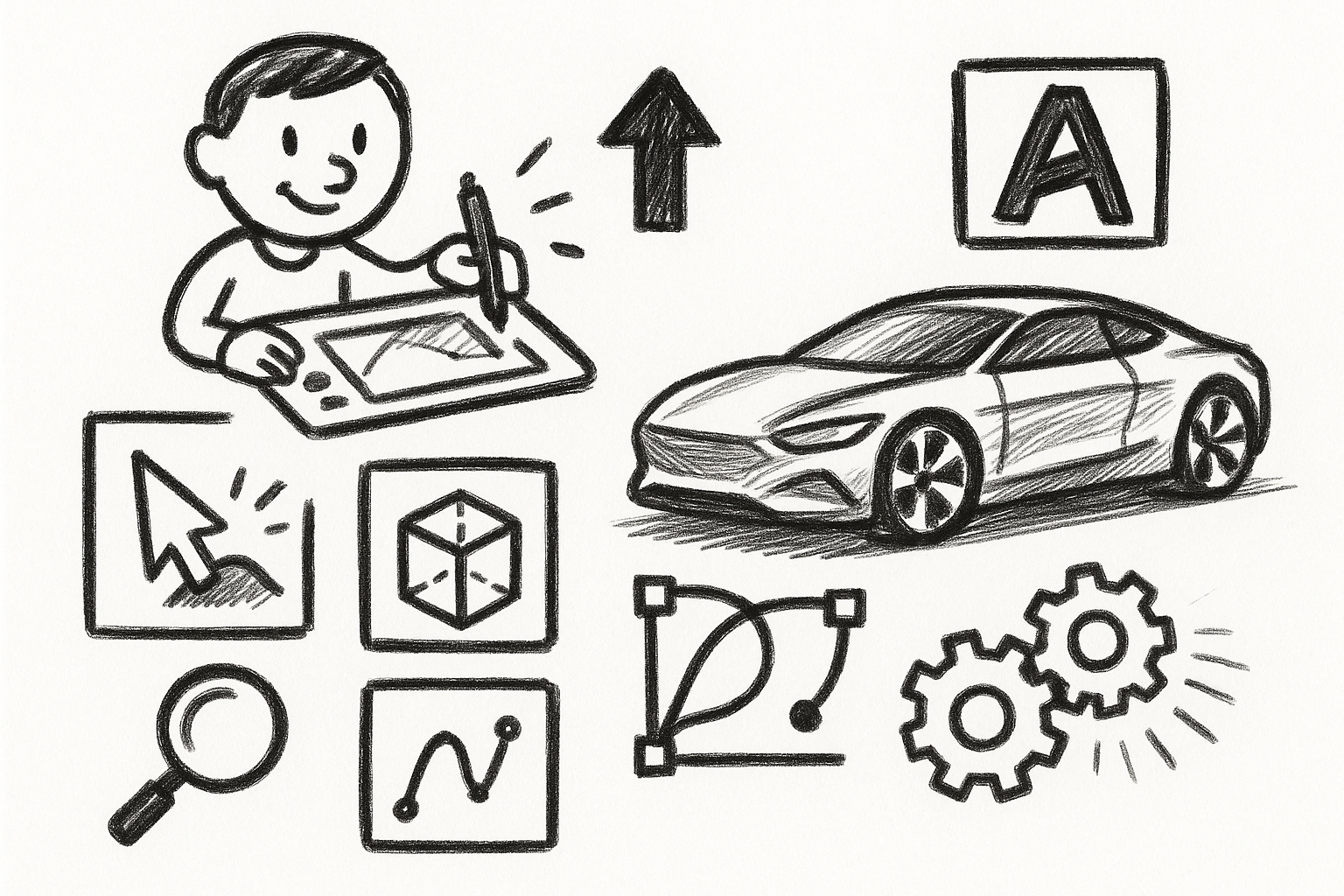Your Cart is Empty
Customer Testimonials
-
"Great customer service. The folks at Novedge were super helpful in navigating a somewhat complicated order including software upgrades and serial numbers in various stages of inactivity. They were friendly and helpful throughout the process.."
Ruben Ruckmark
"Quick & very helpful. We have been using Novedge for years and are very happy with their quick service when we need to make a purchase and excellent support resolving any issues."
Will Woodson
"Scott is the best. He reminds me about subscriptions dates, guides me in the correct direction for updates. He always responds promptly to me. He is literally the reason I continue to work with Novedge and will do so in the future."
Edward Mchugh
"Calvin Lok is “the man”. After my purchase of Sketchup 2021, he called me and provided step-by-step instructions to ease me through difficulties I was having with the setup of my new software."
Mike Borzage
Design Software History: The Shift to Subscription Models: Transforming Design Software Access and Innovation
October 30, 2024 4 min read


Introduction
The landscape of design software has undergone significant transformations over the decades, with one of the most profound shifts being the move towards subscription-based models. Historically, software licensing was dominated by perpetual licenses, allowing users to pay once and own the software indefinitely. However, as the industry evolved, companies began adopting subscription models, fundamentally changing how users access and interact with design tools. This shift not only reflects changes in technology and economics but also represents a pivotal point in the relationship between software providers and their users. Understanding this evolution is crucial for both users and companies to navigate the modern software environment effectively.
The Evolution of Software Licensing Models
In the early days of software distribution, the traditional licensing model reigned supreme. Users purchased a perpetual license, paying a substantial one-time fee to gain indefinite access to the software. This model worked well when software updates were infrequent, and the pace of technological advancement was slower. Users could invest in a tool and rely on it for years without needing significant upgrades.
However, as technology accelerated, the limitations of perpetual licensing became apparent. Software companies faced challenges in generating continuous revenue and funding ongoing development. This led to the introduction of maintenance fees and optional updates, but these solutions were often cumbersome and unpopular with users. The industry needed a new approach that would align the interests of both software providers and users.
The transition to subscription models began in earnest in the late 2000s and early 2010s. Companies recognized that a subscription-based approach could provide a steady revenue stream and support continuous development and deployment of new features. Users, in turn, would benefit from regular updates and improvements without the need for large upfront investments. Adobe was one of the early adopters in the design software industry, launching the Adobe Creative Cloud in 2013. This marked a significant turning point, signaling to the industry that subscription models were the future of software licensing.
Impact on Users and Design Firms
The shift to subscription models has had profound effects on users and design firms. One of the most immediate benefits for users is the lower upfront costs. Instead of a hefty initial investment, users can access professional-grade tools for a manageable monthly or annual fee. This accessibility has democratized design software, allowing freelancers and small firms to compete with larger organizations.
Additionally, subscription models ensure that users receive continuous updates and access to the latest features. This means that design professionals can leverage cutting-edge technologies and stay ahead in a rapidly evolving industry. The cloud-based nature of many subscription services also enables enhanced collaboration, with teams able to work together seamlessly from different locations.
However, the transition has not been without challenges. Users have expressed concerns about their dependence on service continuity. If a subscription lapses, access to essential tools and past work can be disrupted. Moreover, there is apprehension about the higher long-term costs associated with ongoing subscription fees. Over time, the cumulative cost of subscriptions may exceed what users would have paid for a perpetual license.
Design firms have had to adapt their budgeting and workflows to accommodate these changes. The need for consistent subscription management and ensuring all team members have the necessary access requires careful planning. Despite these hurdles, many firms have found that the benefits of subscription models, such as scalability and access to support services, outweigh the drawbacks.
Key Players and Innovations
Several major companies have been at the forefront of the subscription trend in design software. Autodesk, a leader in 3D design, engineering, and entertainment software, transitioned many of its products to subscription models starting around 2016. This move allowed Autodesk to provide more flexible pricing options and more frequent updates to their users.
Adobe has been a significant player in this space with its Creative Cloud suite. By bundling its wide array of design tools into a subscription service, Adobe has created an ecosystem that encourages users to explore and utilize multiple applications seamlessly. This integration is a key innovation that has enhanced user productivity and workflow efficiency.
Alongside the shift to subscriptions, these companies have introduced innovations that leverage the benefits of cloud computing. For instance, cloud collaboration tools have become a staple, allowing designers to work together in real-time, regardless of geographic location. Users also gain instant access to new features and updates without the need for manual installations or additional purchases.
Looking to the future, it is anticipated that subscription models will continue to evolve. Companies may introduce more customizable subscription plans, allowing users to pay only for the features they need. There is also the potential for increased integration of artificial intelligence and machine learning, provided seamlessly through ongoing updates within the subscription framework. These advancements will likely further enhance the capabilities of design software and the value delivered to users.
- Flexible Pricing Options: Subscriptions can be tailored to individual or enterprise needs.
- Enhanced Support Services: Subscribers often receive priority customer service and training resources.
Conclusion
The transition to subscription models in design software marks a significant shift in how users and companies interact with technology. It reflects a broader trend towards service-based offerings in the software industry, emphasizing continuous improvement and user engagement. While the model presents challenges, particularly concerning long-term costs and dependence on provider continuity, it offers substantial benefits in terms of accessibility, regular updates, and enhanced collaboration tools.
From a software development perspective, subscription models incentivize companies to maintain high levels of innovation and customer satisfaction. The ongoing relationship between provider and user fosters a more responsive approach to feature development and bug fixes. Users, in turn, have greater opportunities to influence product evolution through feedback mechanisms inherent in subscription services.
As the design software landscape continues to evolve, we can expect subscription models to become even more prevalent. The focus will likely shift towards more personalized experiences, with subscriptions adapting to the specific needs of different user groups. Ultimately, this evolution promises to deliver more powerful, efficient, and user-friendly tools that will shape the future of design across industries.
Also in Design News

Mastering Precision: 5 Advanced Techniques to Elevate Your Autodesk Alias Workflow
August 29, 2025 5 min read
Read More
Rhino 3D Tip: Optimizing Rhino Workflow Through Strategic Plugin Integration
August 29, 2025 3 min read
Read More
Harnessing Edge Computing to Transform Design Software Workflows
August 29, 2025 12 min read
Read MoreSubscribe
Sign up to get the latest on sales, new releases and more …


